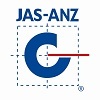What Is the Keto Weight-reduction plan?
The Keto eating regimen involves going lengthy spells on extraordinarily low (no higher than 30g per day) to almost zero g per day of carbs and growing your fat to a really high stage (to the point the place they may make up as a lot as 65% of your daily macronutrients intake.) The idea behind this is to get your body into a state of ketosis. In this state of ketosis the body is meant to be more inclined to use fat for energy- and analysis says it does just this. Depleting your carbohydrate/glycogen liver shops and then moving onto fat for fuel means you must end up being shredded.
You then observe this basic platform from say Monday until Sat 12pm (afternoon) (or Sat 7pm, depending on whose model you read). Then from this time until 12 midnight Sunday night time (so as much as 36 hours later) do your large carb up…
(Some say, and this may also be dictated by your body type, which you can go nuts in the carb up and eat anything you want and then there are people who more properly- for my part- prescribe still sticking to the clean carbs even during your carb up.)
So calculating your numbers is so simple as the following…
Calculate your required upkeep degree of each day calories…
(if you are seeking to drop shortly use thirteen- I would not advise this, if you would like a more degree drop in body fats use 15 and if you’re going to actually attempt to maintain or probably placed on some lean muscle mass then use 17)
Body weight in pounds x 15= a
Protein for zalgiris the day 1g per body weight in pounds= b
Bx4=c (c= number of energy allotted to your day by day protein allowance).
a-c= d (d= quantity of energy to be allotted to fats consumption).
D/9= g per day of fats to be consumed.
The top calculation ought to depart you with a really high number on your fat intake.
Now for those of you questioning about energy levels… Especially for training because there are not any carbs, with there being such a high amount of fat within the food regimen you feel quite full and the fat is a very good fuel source in your body. (One adaptation that I’ve made is to truly have a pleasant fish fillet about an hour earlier than I train and I discover it provides me sufficient energy to get through my workout.) (I am aware of the arguments made to not have fats 2-three hrs otherwise of training. While I won’t have fats 2-three hrs after training as I would like fast absorption and blood movement then, I see no problem with slowing everything down earlier than training so my body has entry to a sluggish digesting energy supply).
Continuing with general guidelines…
There are some that say to have a 30g carb intake instantly after training- just enough to fill liver glycogen levels. After which there are people who say having even as much as that will push you out of ketosis- the state you are trying to maintain. As I’ve executed the submit-workout shake for the final eight+ years of my training I have determined to try the “no submit-exercise” route! I figure I may as well attempt!
Throughout my carb up interval- for the sake of those who would like to know of you may get in shape and sill eat the things you need (carefully)- for the primary six weeks I can be relaxed about what I eat in this interval but then the next 6 weeks I will solely eat clear carbs.
I also like to make sure that the first workout of the week- as in a Monday morning exercise- is a nice long full hour of work so I start cutting into the liver glycogen already.



No comments